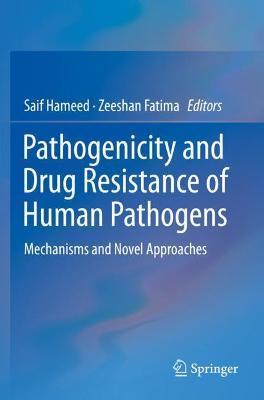(To see other currencies, click on price)
MORE ABOUT THIS BOOK
Main description:
The book comprehensively discusses the mechanisms of pathogenesis and drug resistance; current diagnostics landscape of four key human pathogens; bacterial, fungal, protozoans and viral which are the causes of major infectious diseases. It also assesses the emerging technologies for the detection and quantification of these pathogens. Further, it discusses the novel opportunities to fight against these infectious diseases and to identify pertinent drug targets with novel methodologies. It also reviews the current and future insights into the control, elimination, and eradication of these infectious diseases.
Importantly, the book discusses the epidemiological characteristics and various challenges in combating Ebola and Influenza diseases. Finally, the book highlights the growing role of nanotechnology and bioinformatics resources for combating the infectious diseases.
In summary, the book provides the mechanistic insight of the pathogenicity, drug-resistance, therapeutic strategies and identification of the novel drug targets of Mycobacterium tuberculosis, Plasmodium, Candida, Hepatitis C and emerging viral infections.
Contents:
Chapter 1. Pathogenicity and Drug resistance in Mycobacterium tuberculosis.- Chapter 1.1. Overview of tuberculosis pathogenesis.- Chapter 1.2. Response of Mycobacterium Tuberculosis to pH stress.- Chapter 1.3. Recent advances in Diagnosis of Tuberculosis.- Chapter 1.4. Molecular basis of Drug Resistance in Mycobacteria.- Chapter 1.5. Eliminating Mycobacterial persisters: novel targets for anti-TB therapy.- Chapter 1.6. Roadmap for the eradication of MDR-TB.- Chapter 2. Candida infections and therapeutic strategies.- Chapter 2.1. Fungal diseases and their treatment: a holistic approach.- Chapter 2.2. Anti-Candida therapeutics: mechanisms, resistance and safer phytomedicinal approaches.- Chapter 2.3. Mitochondria and drug resistance in Candida.- Chapter 2.4. Mechanism of Anti-Fungal for cutaneous infections: preventive potential, mechanism and treatment.- Chapter 3. Malarial parasite biology.- Chapter 3.1. Drug targets in Malarial parasites.- Chapter 3.2. Pathogenic mechanism and signaling pathways in Plasmodium.- Chapter 3.3. Mechanism of Drug Resistance in Plasmodium.- Chapter 3.4. Novel antimalarial drug targets.- Chapter 3.5. Novel therapeutic targets in malaria.- Chapter 4. Emerging Viral Diseases.- Chapter 4.1. Hepatitis C Virus and innate interferon response.- Chapter 4.1.1. Pathogen biology.- Chapter 4.1.2. Drug resistance.- Chapter 4.1.3. Novel drug targets and therapeutic strategies.- Chapter 4.2. Epidemiological trends and current challenges in Ebola.- Chapter 4.2.1. Pathogen biology.- Chapter 4.2.2.Drug resistance.- Chapter 4.2.3. Novel drug targets and therapeutic strategies.- Chapter 4.3. Prions diseases: a concern for mankind.- Chapter 5. Translational Research in Human Microbes.- Chapter 5.1. Harnessing microbiota as anti-infectives.- Chapter 5.2. Human microbiome and malignancy: principles, mechanisms and challenges.- Chapter 5.3. Current and future perspectives of nanobiotechnology: in combating microbial pathogenesis.- Chapter 5.4. Microbes in reproductive tract system: inferences from microbial world.- Chapter 5.5. miRNAs in infectious diseases.- Chapter 5.6. Application of bioinformatics in combating infectious diseases.
PRODUCT DETAILS
Publisher: Springer (Springer Verlag, Singapore)
Publication date: August, 2021
Pages: 404
Weight: 652g
Availability: Available
Subcategories: Infectious Diseases, Microbiology, Pharmacology

